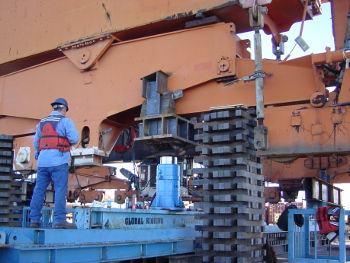Embracing Sustainability in Heavy Lift and Transport Operations: Challenges and Opportunities
- hrudd0
- May 7, 2024
- 2 min read

In the realm of heavy lift and transport operations, the colossal machinery, intricate logistics, and massive payloads often steal the spotlight. Yet, amid the hustle and bustle of these mammoth tasks, there lies a crucial consideration that cannot be overlooked: sustainability. At Global Rigging and Transport, we recognise that sustainability isn't just a buzzword; it's a fundamental ethos that guides our operations towards a greener, more responsible future. In this blog, we delve into the pivotal role of sustainability in heavy lift and transport operations, exploring both the challenges we face and the abundant opportunities it presents.
Challenges:
Carbon Footprint: One of the most pressing challenges in heavy lift and transport operations is the significant carbon footprint associated with diesel-powered machinery and transportation vehicles. From cranes to trucks, each element of the operation contributes to greenhouse gas emissions, posing a threat to the environment and exacerbating climate change.
Resource Intensity: Heavy lift operations require substantial resources, from steel for equipment fabrication to fuel for machinery. Managing these resources responsibly and minimising waste is a challenge that demands innovative solutions and a commitment to sustainable practices.
Infrastructure Impact: Transporting oversized and overweight cargo often necessitates modifications to existing infrastructure or even the construction of temporary roads and bridges. Balancing the need for efficient transport routes with the preservation of natural habitats and ecosystems poses a significant challenge.
Opportunities:
Technological Innovation: The advancement of technology opens up a world of opportunities for sustainability in heavy lift and transport operations. From the development of hybrid and electric-powered machinery to the implementation of smart logistics solutions, technological innovation holds the key to reducing carbon emissions and increasing efficiency.
Alternative Fuels: Exploring alternative fuels such as biofuels, hydrogen, and renewable energy sources presents a promising avenue for reducing the carbon footprint of heavy lift operations. By transitioning away from fossil fuels, we can mitigate environmental impact and pave the way for a more sustainable future.
Collaborative Partnerships: Collaboration across industries, governments, and communities is essential for addressing the challenges of sustainability in heavy lift and transport operations. By partnering with stakeholders who share our commitment to sustainability, we can leverage collective expertise and resources to drive meaningful change.
Our Commitment:
At Global Rigging and Transport, sustainability isn't an afterthought; it's ingrained in everything we do. From investing in eco-friendly equipment and alternative fuels to implementing stringent environmental management practices, we are dedicated to minimising our impact on the planet while delivering exceptional service to our clients.
Through innovation, collaboration, and a steadfast commitment to sustainability, we believe that heavy lift and transport operations can not only meet the challenges of today but also contribute to a greener, more sustainable tomorrow. Together, let's rise to the challenge and embrace the opportunities that sustainability presents in shaping the future of our industry.
Contact us today to learn more about our services and equipment and how we can assist with your next project: d.close@globalrigging.com
GRT has offices in Virginia (US), Vancouver (Canada), San Antonio (Chile) and Panama City (Panama), enabling our capacity to meet the needs of global clients quickly and efficiently.
Photograph by Nicholas Doherty




Comments